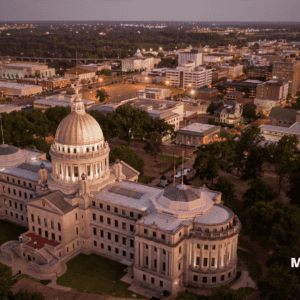Job gains across the states reflected strong national jobs growth in June, according to the Bureau of Labor Statistics. Florida led all states with a gain of 81,000 jobs. More than half of Florida’s job gains came in the leisure and hospitality sector. Arizona and Nevada had the fastest job growth rate proportionate to the size of their labor markets. Like Florida, well more than half of Nevada’s job gains came in the leisure and battered hospitality sector.
Forty-four states posted jobs gains in June, with only six reporting job losses. June was one of the stronger months for state job growth in 2021.
Federal unemployment benefits are being phased out early in more than half of states across the country, reflecting the negative impact of excessive benefits on the labor market. Those phase outs began in June and are exclusively in states with a Republican governor. Despite strong job growth in June, there remain 9.2 million job openings in the US economy, a record level. The record job openings is evidence of the labor shortage businesses are feeling.
June jobs performance by state
Florida took lead honors in June after several months of California having the most total jobs growth. Florida gained 81,300 jobs, followed by California (+73,500), Texas (+55,800), North Carolina (+41,900), and Arizona (+37,800). Florida is the third-largest state. Any month when the Sunshine State gains more jobs than California and Texas indicates that Florida’s job growth rate is significantly faster for that month.
On a percentage basis, the most rapid gains on the month were from Arizona (1.3 percent) and Nevada (1.2 percent) followed by North Carolina (0.9 percent), Florida (0.9 percent), and Idaho (0.8 percent).
Recession recovery update through June
Idaho (+2.2 percent) and Utah (+1.8 percent) continue to be the only states that have recovered to the jobs count they had in January 2020, before the pandemic recession. The other 48 states still have fewer jobs in June 2021 than they had in January 2020, indicating the severe impact of the pandemic and its fallout on state labor markets. After a strong performance in June, Arizona sits in third place on the overall jobs recovery (-1.3 percent)— having leapfrogged South Dakota (-1.4 percent). Arizona started the year in ninth place on recovery.
Florida is the most improved state for jobs recovery in 2021, having jumped from 30th place to 20th place over the last six months.
Hawaii (-14.1 percent) and New York (-9.5 percent) remain the two worst states for jobs recovery, the same position they held when the year started. Alaska (-8.3 percent), Louisiana (-7.7 percent), and New Mexico (-7.4 percent) round out the bottom five for jobs recovery over the course of the pandemic recession and subsequent recovery.
In terms of sheer jobs count lost, California still has 1.2 million fewer jobs than in January 2020 and remains ranked #40 for recovery.
Leisure and hospitality jobs continue to lag behind
The leisure and hospitality sector was hardest hit by the pandemic and remains furthest behind on recovery. Thirty-seven states are still down by one in 10 leisure and hospitality jobs compared to before the recession; 13 states are still down by one in five. Only Idaho has returned to its pre-recession count of leisure and hospitality jobs. The leisure and hospitality jobs sector correlates with a state’s overall jobs performance through the pandemic era, with many states ranking similarly in overall jobs recovery to where they rank in leisure and hospitality jobs recovery. Tourism reliant states, especially Hawaii, Nevada, and Florida, have experienced the pronounced general job losses due to losses in the leisure and hospitality sector.
States look forward to 2022 legislative sessions
Policymakers completed one of the most important legislative sessions in a generation in spring of 2021. Fiscal and economic policies were enacted to respond to the coronavirus pandemic and to chart each state’s economic recovery. This sets up states to finish the job in the 2022 legislative sessions when the depth of the coronavirus pandemic is fully in the rear-view mirror.
More than half of states have opted out of extended federal unemployment bonus benefits in response to a growing labor market shortage. Bonus unemployment benefits will end after Labor Day for the rest of the states, putting an end to a federal program that has prolonged the labor market shortage.
States should continue to focus on tax relief and tax cuts. Eleven states enacted tax reforms to cut their income taxes in 2021, a trend that is likely to continue in 2022 as federal aid and recovering state revenues leave states flush with cash. Treasury Department guidance for the American Rescue Plan Act (ARPA) lets states replenish their unemployment trust funds in order to keep business payroll taxes low, and it allows them to plug revenue losses. States can also reduce taxes to fiscal 2019 levels indexed for inflation to further incentivize growth and attract interstate migrants.
Headwinds to the recovery are emanating from Washington DC, including inflation and a policy-induced labor market shortage. There is ongoing risk that the federal government will significantly raise taxes on businesses and capital, thus slowing down the recovery. This makes it all the more important that states get ahead of these risks by continuing to enact pro-growth fiscal and regulatory policies.



